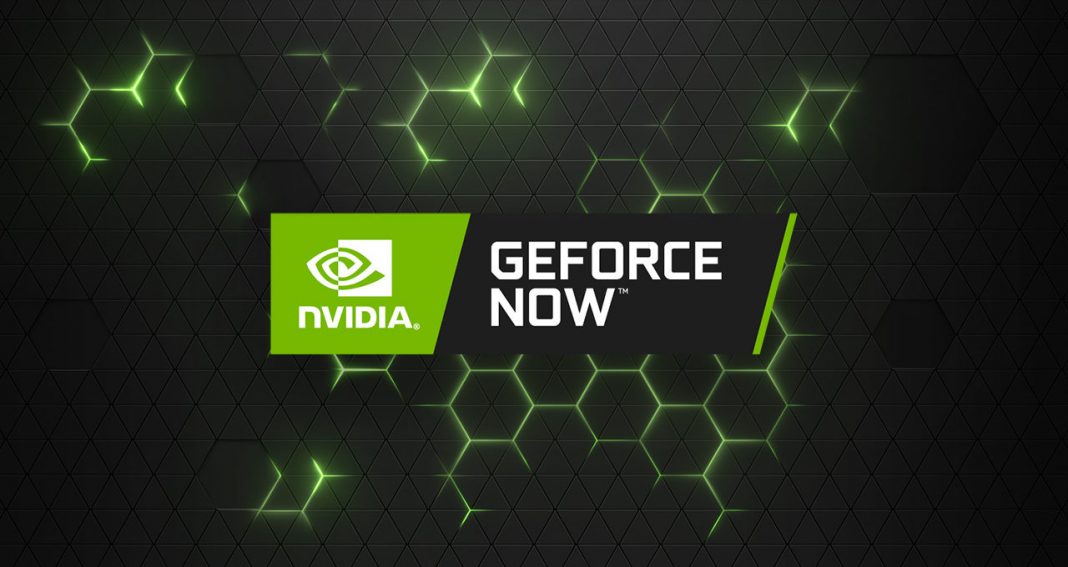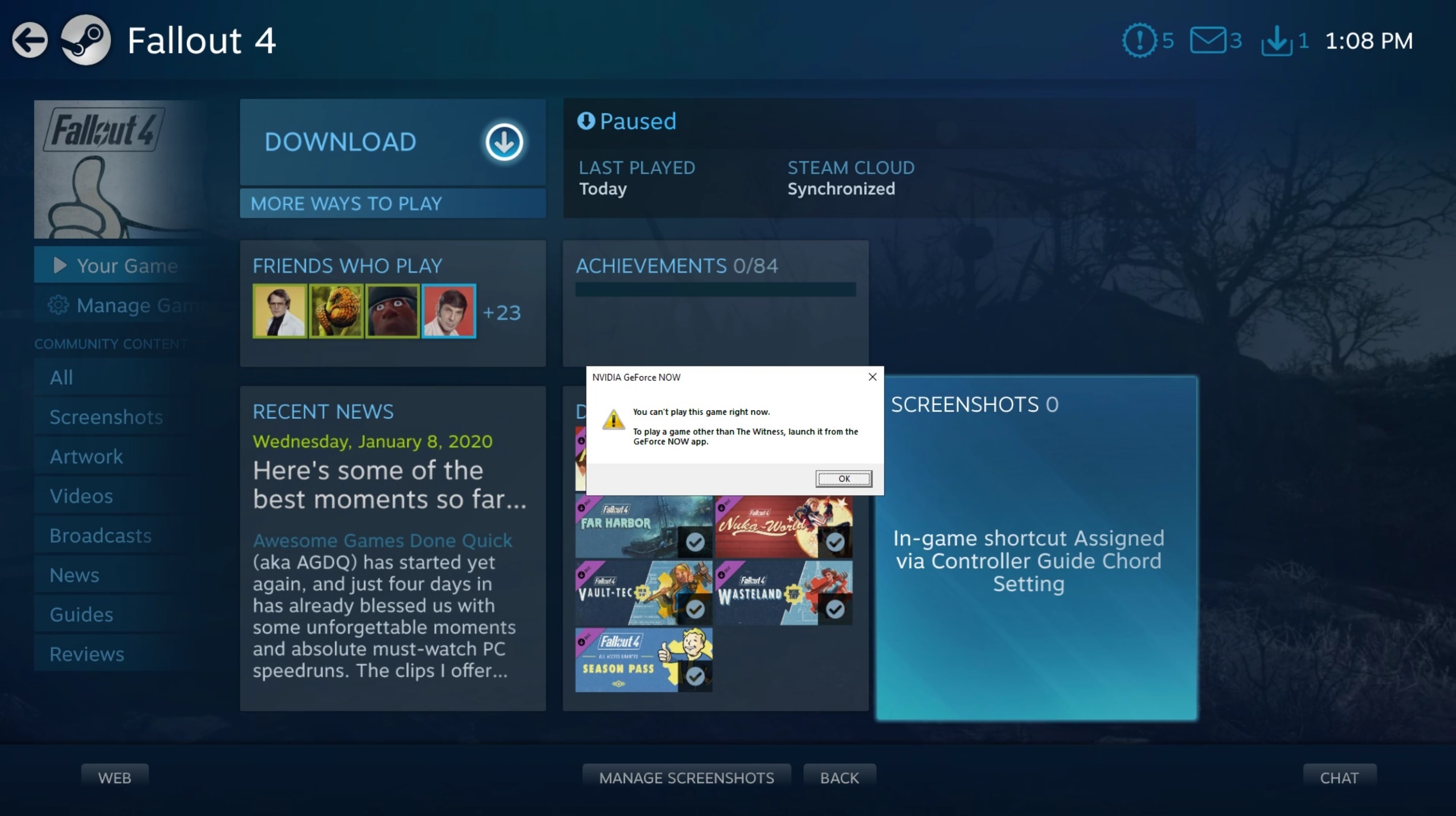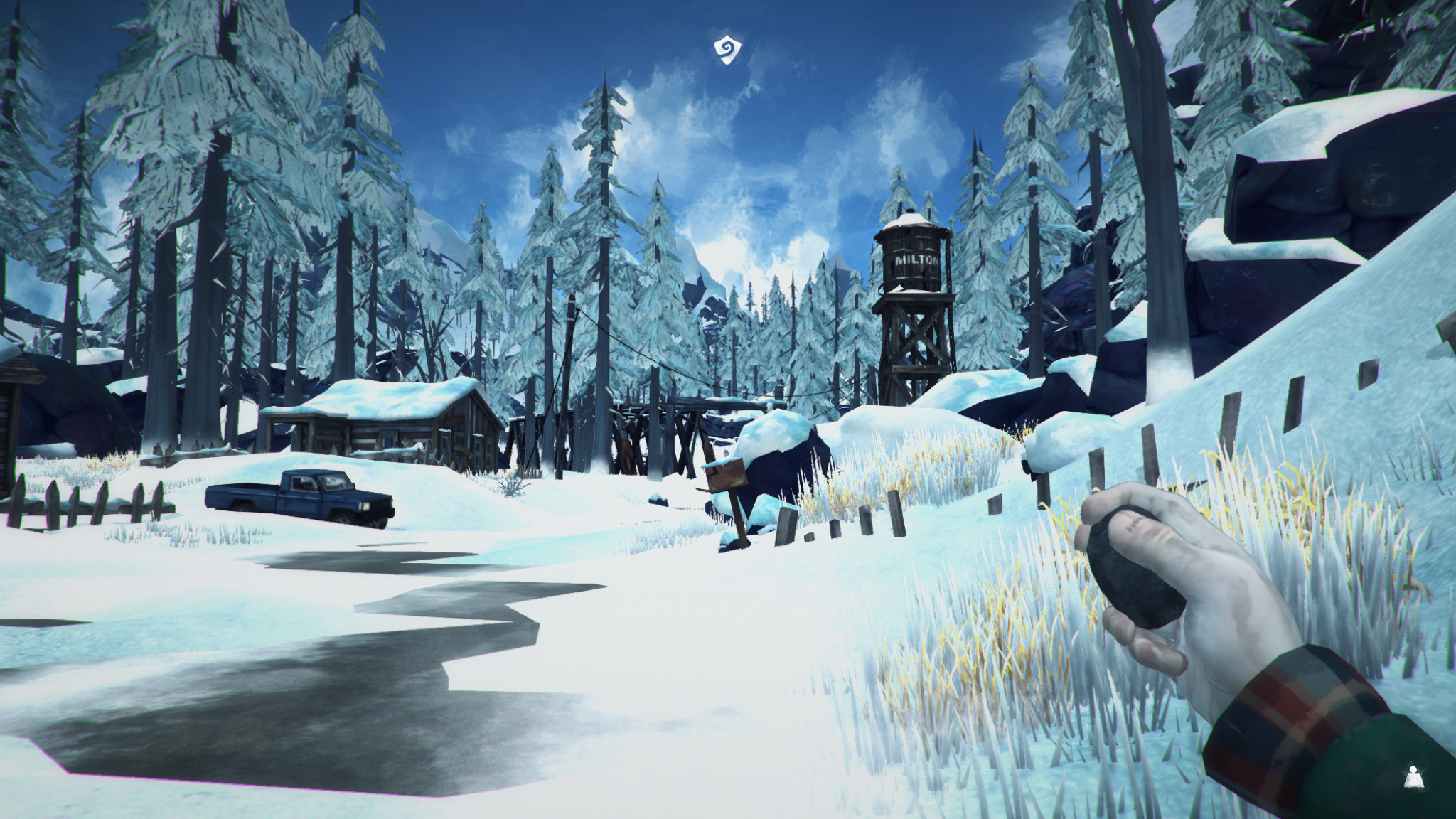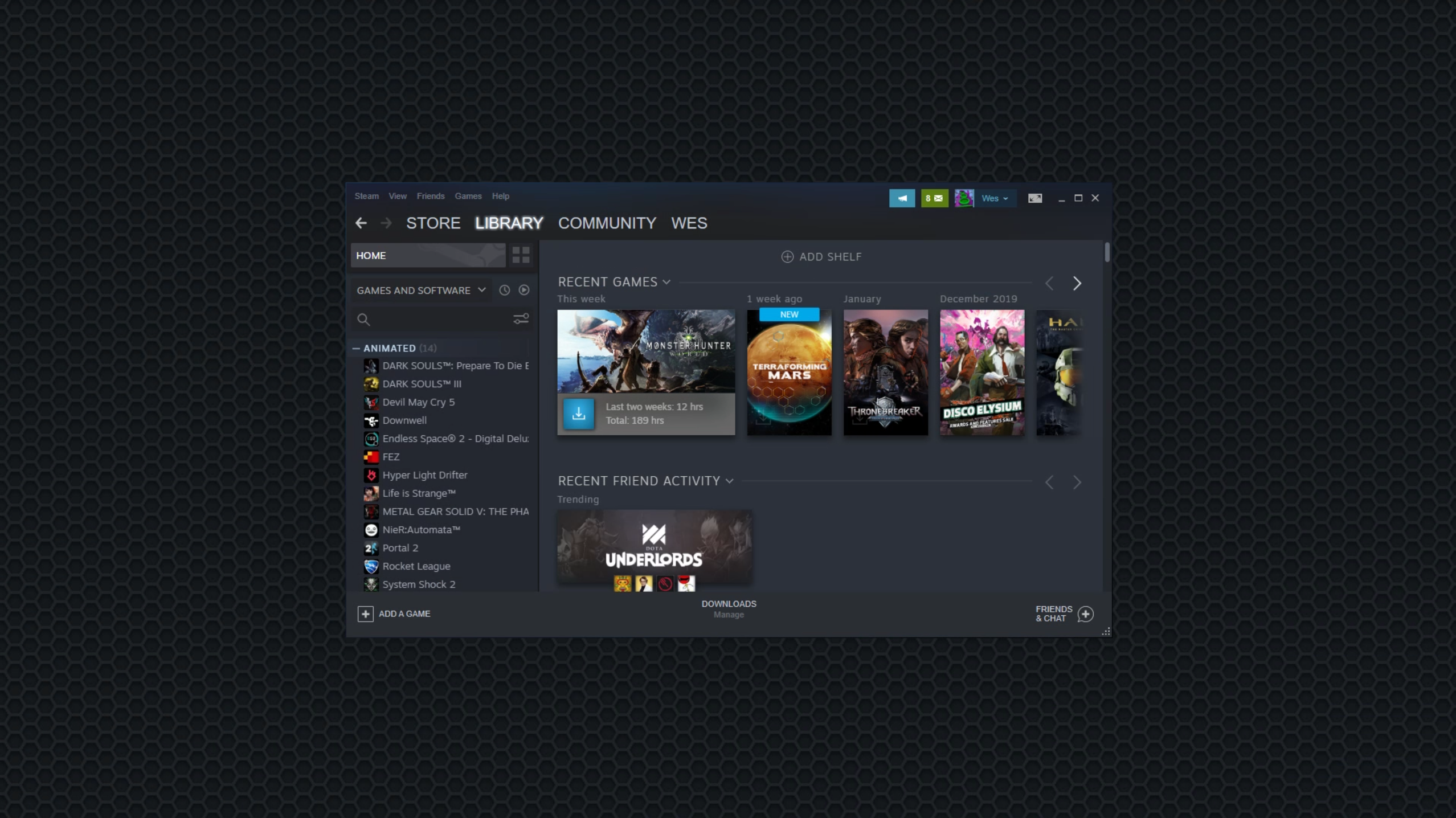The controversy over GeForce Now, explained
How does the service work, and why are developers removing games from GeForce Now?

At the beginning of February, we said that Nvida's GeForce Now is the cloud streaming service that Stadia should've been. It largely performs better, lets you play games you already own, and offers perks like RTX ray tracing. Those things are still true, but throughout the month GeForce Now has become unexpectedly controversial. Activision Blizzard and Bethesda pulled their games from the service, and so did the indie developer of survival game The Long Dark, claiming Nvidia never had their permission to include the game at all.
Developers asking Nvidia to pull their games from GeForce Now has prompted some backlash from users who argue that GeForce Now isn't a "platform" at all, because you're simply renting a cloud server from Nvidia to run your own games on. You have to own the game on Steam or another store already; if you've already bought it, shouldn't you be able to run it on any PC you want, even a remote one?
Yes, but also: it's complicated. Here's what's going on with GeForce Now.
How GeForce Now works

GeForce Now is a streaming service, but it doesn't work like Netflix, or even Google Stadia. Right now, you can't buy any games from Nvidia. GFN is only for streaming games you already own from a powerful cloud computer. It's free to sign up for "standard access" and one hour play sessions. That means you can only play games for an hour at a time, and may have to wait in a queue to reconnect as GFN grows more popular. Or you can become a "Founders" member for $5 per month, which gets you priority access, longer sessions and the ability to turn on ray tracing in games that support it.
To run games through GeForce Now, you download a launcher and have to search for games by name to add to your library. When you select a game you own and launch it, GeForce Now connects you to a remote computer and asks you to login to Steam. Once logged in, it will only give you permission to install and play the game you chose to launch—you can't switch to any other game in your library.

Installing the game you want to play is instant, presumably because Nvidia has all of GFN's supported games accessible in cloud storage already.
A quick timeline of GeForce Now so far
- 2014: Nvidia starts GRID streaming service to stream games to its Shield handheld and tablet. Games library is limited to a select few licensed for the service. This would eventually morph into GeForce Now.
- 2016: GeForce Now for the Shield costs $8 per month with a limited selection of free games. Newer games can also be bought through the service, and come with a code for the corresponding store (like Steam). Nvidia opens GFN up to developers to join the library.
- January 2017: Nvidia announces GeForce Now for Mac and PC, planning to charge per minute of gameplay. "Renting" a more powerful server with a GTX 1080 would cost more than renting one with a GTX 1060.
- October 2017: GeForce Now launches a free beta, but only for Mac. It supports about 100 games, but you have to own the games on a platform like Steam to play them. The earlier planned pricing scheme never returns.
- January 2018: Nvidia launches PC beta of GeForce Now.
- December 2019: Capcom games are removed from GeForce Now
- February 2020: GeForce Now launches out of beta into full release, with a free tier and a "founders" tier that offers longer play sessions and ray tracing.
- February 14: Nvidia says that it removed Activision Blizzard games over a "misunderstanding" around the free trial for founders
- February 21: Bethesda games except Wolfenstein Youngblood are removed from GFN, and Nvidia says 1,500 more games are on the way, while "game removals should be few and far between."
- March 1: The Long Dark is removed from GFN after developer says Nvidia didn't ask for permission.
Why developers have pulled their games
"Nvidia didn't ask for our permission to put the game on the platform so we asked them to remove it," tweeted The Long Dark developer Raphael van Lierop, adding that "devs should control where their games exist." For Vice, Patrick Klepek reached out to several other indie developers who weren't aware their games were on GeForce Now, and said they didn't have active agreements with Nvidia. When reached for comment, Nvidia pointed me to a recent blog about what's next for GFN, and offered to put me in touch with some developers, but didn't answer specific questions about how its partnerships work or how games are added to the service.
The biggest gaming news, reviews and hardware deals
Keep up to date with the most important stories and the best deals, as picked by the PC Gamer team.
Nvidia definitely did have agreements in place with publishers like Activision, but the publisher's stance changed when GeForce Now left its free beta. Publishers seemingly saw things differently when the paid subscription tier was added.
When Activision Blizzard's games were removed from GFN, Nvidia told Bloomberg: "Activision Blizzard has been a fantastic partner during the GeForce Now beta, which we took to include the free trial period for our founders membership. Recognizing the misunderstanding, we removed their games from our service, with hope we can work with them to re-enable these, and more, in the future."
When Bethesda's games were removed, Nvidia didn't offer a specific reason, but posted this on its blog: "As we approach a paid service, some publishers may choose to remove games before the trial period ends. Ultimately, they maintain control over their content and decide whether the game you purchase includes streaming on GeForce Now. Meanwhile, others will bring games back as they continue to realize GeForce Now's value."

An indie publisher I spoke with who had games on GFN characterized their contract with Nvidia as being simple and good for the publisher, saying it laid out in clear terms that Nvidia would only launch games from the developer's chosen platform (eg, Steam, Epic, etc) and was entitled to no profits from any game sales (GeForce Now doesn't sell games, but this means Nvidia gets no affiliate sales cut, either). The contract also allowed for the relationship to be easily terminated.
Based on the statements of other indie developers, it sounds like Nvidia's long-term plan is to support streaming of virtually all games on Steam, without specific agreements in place with those developers. Nvidia seems willing to let developers opt out, but isn't presenting that option up front.
"Nvidia made us aware in advance of the GFN service, and that it would be available to Terraria owners (and really, all games on Steam) in the coming months, regardless of our involvement (or not)," Ted Murphy of Terraria developer Re-Logic told me over email. To clarify, I asked if Murphy believed Terraria would be available on GeForce Now regardless of Re-Logic's cooperation, and he said yes.
"That was how we interpreted what was being said, that GFN would be something that wove in with Steam—a new way for gamers that had already purchased a given game to be able to play… We didn’t really see an issue with that logic... and the agreement only covered the use of Terraria in marketing, etc. It did not get down into any other aspects or details, there was never any 'explicit permission' asked for in terms of the game being present on the platform."
Indie publisher Mike Rose tweeted about a similar interaction. I asked Nvidia for comment on whether the plan going forward is to add all games on Steam, but did not receive a reply. The big question is: Does Nvidia really need permission?
Isn't GeForce Now actually just renting you a computer?
This is the most common argument I've seen from GeForce Now users upset to see games they were previously streaming on the service disappear. If you bought a game, shouldn't you be able to do what you want with it? And if you already own the game, isn't GeForce Now just renting (or loaning) you a computer to play it on? Why should it be treated differently than installing a game on a second PC?
Unfortunately, buying games today isn't as simple as "owning" them. What you're typically buying is a license, and that license comes with strings, like DRM. One of those strings is the EULA, the interminable license agreement in front of some games that may say you can't mod the game or use it in particular ways. As Patrick Klepek pointed out in his reporting on GeForce Now, some EULAs specifically forbid using a cloud service to stream the game. Blizzard bans cloud computing along with selling your account or exploiting bugs to duplicate game items. Blizzard also claims ownership over mods, which is pretty shitty.
Even if a service like GFN isn't forbidden by a game's EULA, though, it's not purely a hardware service. GeForce Now includes an app and interface for selecting games, including art and descriptions of those games. It's a curated ecosystem, and currently GeForce Now only allows you to play games that Nvidia claims are compatible (when you choose to launch a game, it locks the cloud server's permissions to ensure you can only play that game). I haven't gotten an answer from Nvidia about whether or not bespoke work goes into ensuring these games run properly when streamed from the cloud, but regardless, you're not renting a blank slate cloud computer: it already has Steam and other stores installed, and every compatible game is already installed on a network drive that your virtual machine connects to.

Nvidia has done a lot of custom work to build GeForce Now into a tailored game playing service. That's a major selling point. Yes, you're playing games you already own, but it is a platform, because there's an interface that makes playing them much simpler than it would be on a blank virtual machine, where you'd have to install everything manually. And the way Nvidia promotes GeForce Now—and eventually makes money off of it—is by advertising the games in its library.
GeForce Now isn't exactly the same as going to a friend's house or borrowing a PC and installing your games on it. While there might be no functional difference for the user, there's a big difference in the relationship between the developer and the company providing the hardware.
If you own a game and just want to stream it from a powerful cloud computer, these things all feel like technicalities. If you buy a game, you should be able to do what you want with it, including modding it and playing it on a PC in a data center somewhere. That flexibility is a core part of the PC gaming experience. But the complications of marketing and licensing and emerging competition between streaming services are getting in the way, and developers want to be able to control how their games are presented and distributed, especially when another company is profiting from them.
What happens next?
We may see larger publishers like Activision or Capcom, which pulled its games in December, trying to work out deals where they receive a chunk of the $5 per month Nvidia charges founders, or otherwise change the terms of the deal because GFN is no longer a free beta.
"Though admittedly we did not know that this would be a paid service, as it is only accessible to gamers whom already own Terraria, it only seems fair to let gamers play the game they paid for the way they prefer," wrote Murphy.
For its part, Nvidia has written on its blog that there are many more GeForce Now games to come: "We have an additional 1,500 games in our onboarding queue, from publishers that share a vision of expanding PC gaming to more people."
We'll continue to monitor whether other developers find their games available on GFN without their knowledge, and what gets removed from the service.

Wes has been covering games and hardware for more than 10 years, first at tech sites like The Wirecutter and Tested before joining the PC Gamer team in 2014. Wes plays a little bit of everything, but he'll always jump at the chance to cover emulation and Japanese games.
When he's not obsessively optimizing and re-optimizing a tangle of conveyor belts in Satisfactory (it's really becoming a problem), he's probably playing a 20-year-old Final Fantasy or some opaque ASCII roguelike. With a focus on writing and editing features, he seeks out personal stories and in-depth histories from the corners of PC gaming and its niche communities. 50% pizza by volume (deep dish, to be specific).

